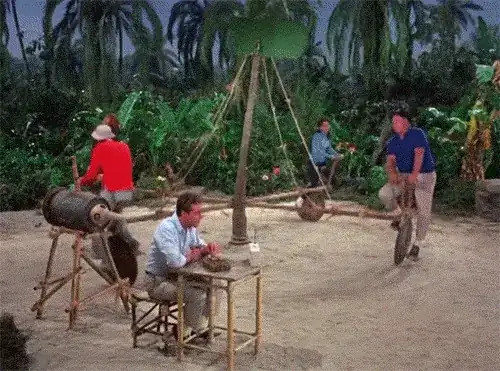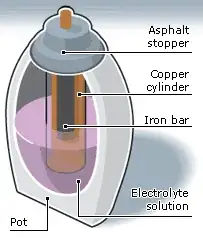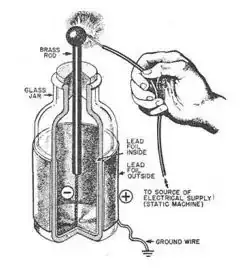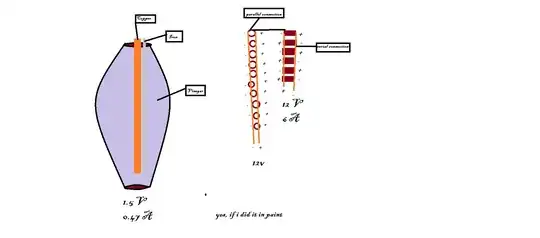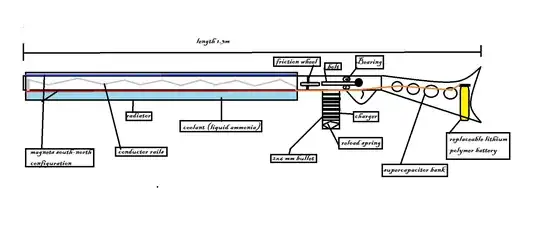Where there's a will there's a way. These natives aren't an army, but they would certainly be marching on their stomachs as they recharge their rifles. Food is the best source of energy for these rifles.
The reality is that they wouldn't recharge the battery. They'd use disposable batteries supplied by the merchant, as others have said. We've done this for a very long time, which is why this bullet:
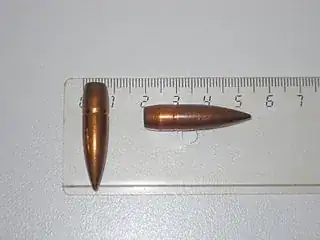
is almost always packaged for resale to the consumer along with its own disposable energy source, to form a "cartridge":
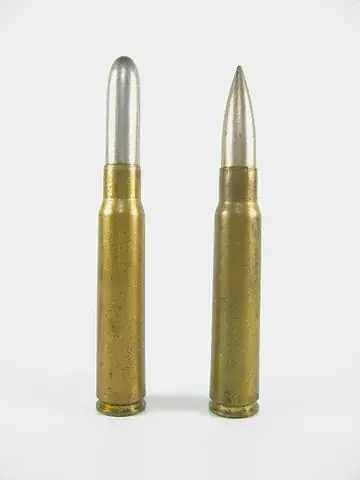
We've used this sort of packaging for 500 years or so, and it is enormously successful. If a bullet is not useful without its energy source, and the energy source is not useful without the bullet, they tend to be packaged together.
But if you really want the natives recharging these weapons for some plot reason, how can we do it?
First off, let's get a sense of scale. The rounds we see in these pictures are 7.92×57mm Mauser rounds, a German service cartridge used in both World Wars, so I think it's a good exemplar of "approximately equivalent to WWI rifles in terms of size, shape and stopping power." A 7.92 round has a muzzle energy of roughly 4kJ. Exact energy depended on the weight of the bullet itself, but values were typically on that range. So every pull of a trigger of your equivalent should put about 4kJ into a bullet.
Now the battery must produce far more than that. The data on optimized coil guns is hazy. They're not considered to be a practical weapon, so most of their use is in research where one has access to three phase power and large capacitor banks. Such researchers are typically more concerned with things like melting the projectile than efficiency, but I'm seeing a very hazy 3% efficiency number being commonly thrown around. This is clearly a weapon optimized for this purpose, so let's round it up to 5%. If 5% of the energy delivered goes into the bullet, and that energy in the bullet is 4kJ, the battery must deliver 80kJ into the coils.
How much is that? You mention a battery that is 100x the capacity of an iPhone battery. You don't specify which battery, and their capacities have only been going up, but lets assume for sake of argument the biggest one available at the time this article is written: the iPhone 13 Pro Max, with a whopping 16.75 Wh battery. It's a bit of a beast. Changing to SI units, 16.75 Wh is 60.3 kJ.
Note the difference. Your coil gun actually needs more energy than your battery can provide. This is almost-but-not-quite a one-shot battery. The battery simply needs to be bigger. We may need a technological boon to improve battery efficiency to make this practical. That or, as suggested at the start, make the battery disposable.
But let's say we've solved these problems. We wait a few generations for a few new iPhones to come out and the battery size to jump to a 22.2 Wh battery, and now multiply by 100x. This is world building - fiction is in our blood. What now? We still need to charge it.
Where is a native to get 80kJ of energy? That's quite a lot of energy. If we gave them a bicycle generator, and assumed every native could produce about 300W (considered reasonable for a fit person, and they tend to be fit), that's about 4:30 of strong pedaling to charge the battery.
Of course, we don't always have to rely on the human power. If this culture is using advanced alien technology, they'd have access to alien power supplies as well. Surely they'd leave behind the power needed.
More need for plot? We can work with that. We'll assume the traders left behind the generator, but the fuel needs to be provided by the natives. What fuel do they have?
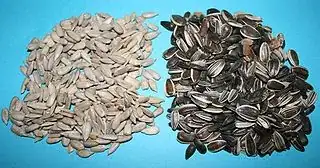
Why include the human body when you can go straight to the fuel source. A sunflower seed has a lot of energy - enough to start growing a new sunflower. Indeed, all seeds have quite a lot of raw energy available for the taking. It's why we ate them as long back as we've been walking the plains (and even before that!)
How much energy? 100g of Sunflower seeds has 2445 kJ of energy in them! And it's reasonable to assume that the advanced technology of the traders can convert this to electrical energy with quite high efficiency, so 100g of sunflower seeds has the energy required for about 30 shots.
A hunter-gatherer society will not have access to bulk sunflower seeds without farming, but they will be able to gather other seeds. A decent seed reactor is probably how they would charge their weapons. Expending a day hunting down a few hundred grams of grass-seed and what-not is probably a solid trade for 30 rounds of a gun that can take down game that can provide protein to families.



